Varanasi is an incredible city in North East India based along the Ganges river, considered sacred to Hindus. It is also one of the oldest continuously inhabited cities in the world (since around 11th or 12th century BC).

A beautiful sunrise over the sacred River Ganges
The river banks of the Ganges in Varanasi are bordered by almost 100 ghats. The ghats are long flights of steps, which lead down to the sacred river.

View of the ghats from our sunrise boat ride – here the swastika is part of the ‘Jain’ ghat
Alongside the ghats of Varanasi, many fascinating aspects of Indian life take place at all times during the day.
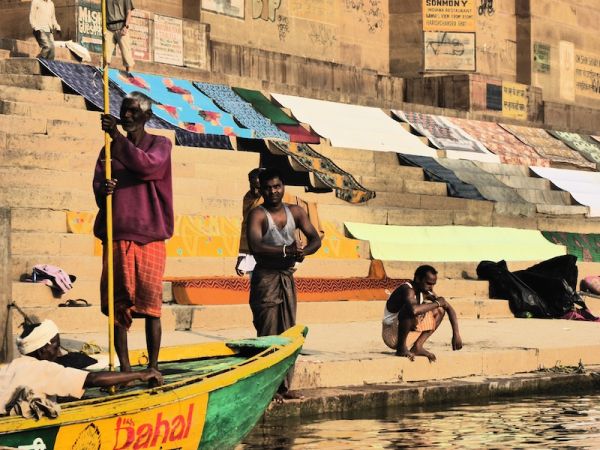
Life along the ghats of Varanasi, such as this man cleaning his teeth
We stayed at Kesher Guesthouse, which was minutes walk away from the busy ghats but in a quiet location, and also very cheap. We spent an entire week in Varanasi just walking up and down the ghats and being completely awed and mesmerised by it all.
Laundry at the ghats
A common and quite fascinating site at the ghats is watching people *wash* their clothes in the river (!) then lay them out to dry across the many stairs.
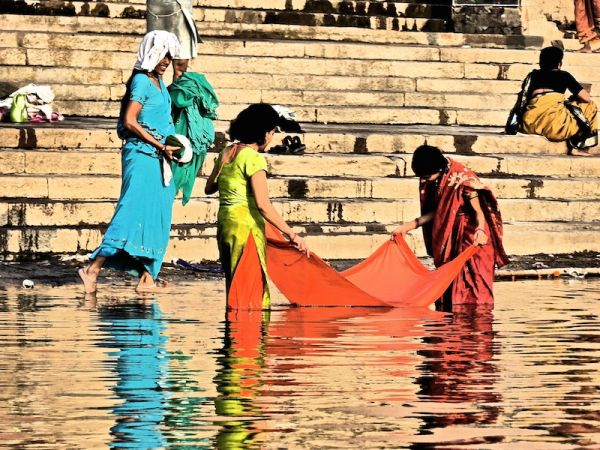
Women doing their laundry in the Ganges river
We asked our guesthouse to wash a load of our clothes and were reassured when we saw they had a washing machine instead of using the Ganges!
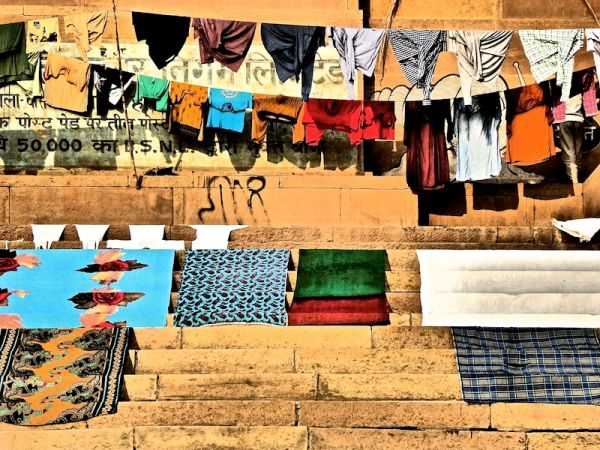
Laundry drying by the ghats after a thorough *clean* in the sacred river
Bathing at the ghats
The sacred Ganges river is worshipped as the goddess ‘Ganga’ in Hinduism:
Icon mosaic of the Goddess Ganga found by one of the ghats
Hindus pilgrims come in their numbers to bathe and pray in the holy river at sunrise.
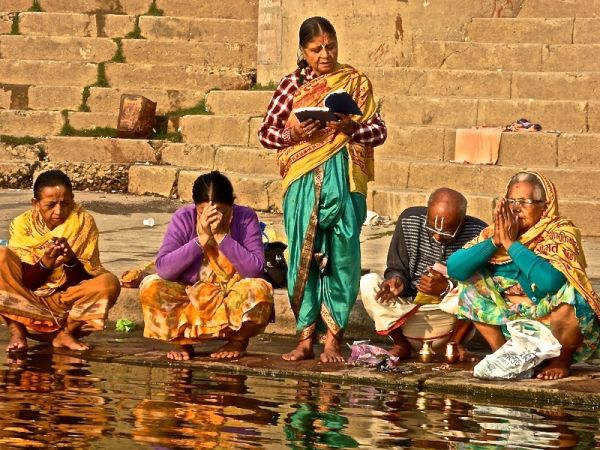
Hindu pilgrims travel from far to pray and bathe in the sacred river
Bathing in the Ganges is believed to wash away a lifetime of sins, meaning you can reach nirvana as opposed to being endlessly reincarnated.
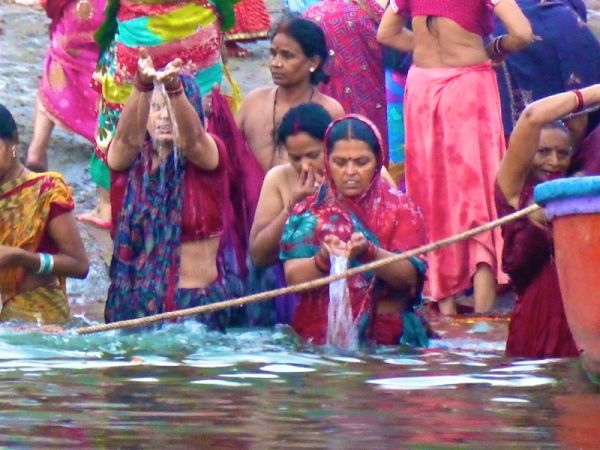
Hindu pilgrims come from far to bathe and pray in the holy river
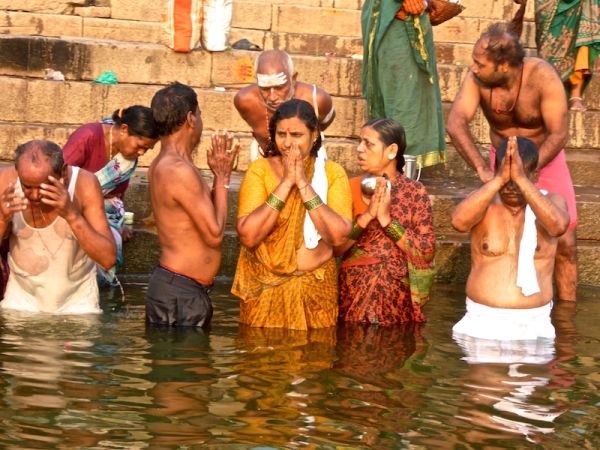
Hindu pilgrims praying and bathing by the ghats of Varanasi

Hindu pilgrims praying and bathing by the ghats of Varanasi
Praying at the ghats
Everyday at sunset at the main Dashashwamedh Ghat, large crowds of pilgrims of all ages gather to pray and chant with the priests performing the spectacular ganga aarti ceremony:
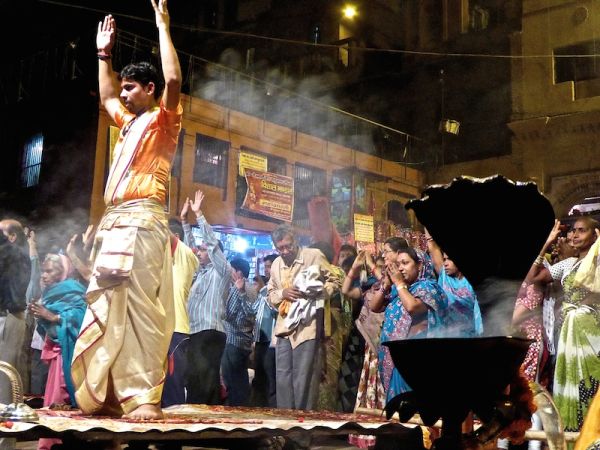
Priest leading the ganga aarti ceremony at the Dashashwamedh ghat
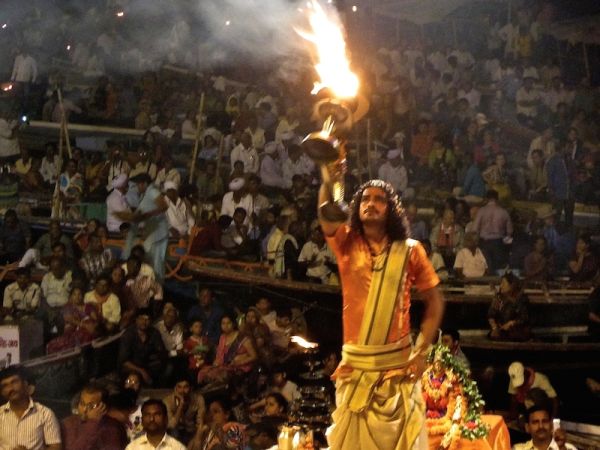
A priest leading the ganga aarti ceremony at the Dashashwamedh ghat

Woman praying with child at the Dashashwamedh Ghat during the aarti ganga ceremony
Ganga aarti is a choreographed ceremony led by a group of young priests. The priests chant to synchronised drum beats, waving candles and incense sticks in the air in an elaborate pattern.
The atmosphere at the ganga aarti ceremonies is mesmerising and incredible to experience. We spent almost every evening during our stay in Varanasi watching it.
We also noticed people gathering every night at a smaller nearby Chowki Ghat to light an elaborate pattern of candles. Then, they would communally pray and chant together around their magnificent creation until the candles died out.

Little girl lighting candles at the Chowki Ghat for pilgrims to pray and chant around

Hindu pilgrims gather at the ghats of Varanasi to light candles and pray together
Cremations at the ghats
Hindus cremate their dead because they believe this releases the deceased’s spiritual essence from the physical body so it can be reborn.
Fire is the chosen method to dispose of the dead because it is believed this purifies the body and will scare away harmful spirits, ghosts and demons.

A public cremation at the burning ghat Manikarnika
Families of the deceased gather with the corpse at the ghats for it to be burnt in public. After the cremation, the ashes are scattered in the Ganges, which returns you to the earth, representing the circle of life.
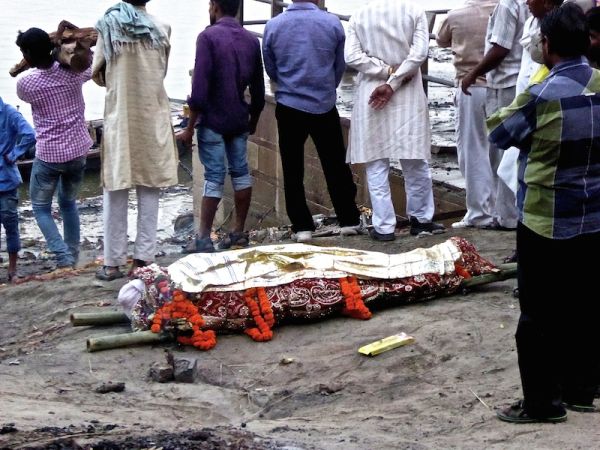
A corpse ready to be cremated at one of Varanasi’s “burning ghats” (the Harishchandra Ghat)
The Marnikarnika and Harishchandra ghats are devoted to public cremation ceremonies and are therefore nicknamed the ‘burning ghats’. Indian women are not allowed to attend the public cremations because it is believed their cries or sobbing may disturb the ascendency of the soul to nirvana.
Large piles of wood are stacked at these two burning ghats and the right amount of wood is carefully chosen to completely incinerate a corpse.
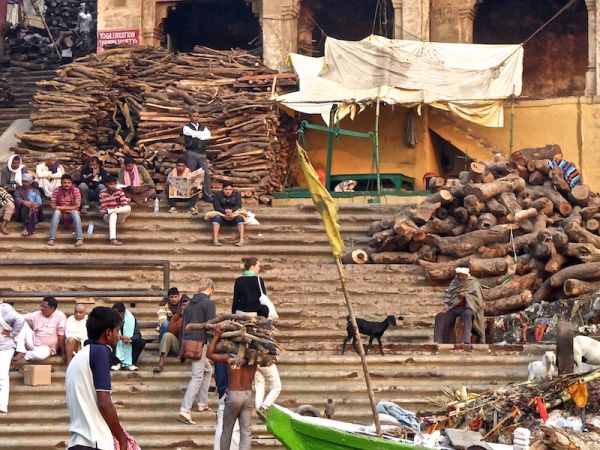
The huge piles of firewood at the main burning ghat of Varanasi (called Manikarnika)
An average of 80 bodies a day are burnt but this is slowly being reduced by the Indian government to prevent pollution. Slowly, bodies are being cremated elsewhere and only the ashes are dispersed into the Ganges.
Yoga by the ghats
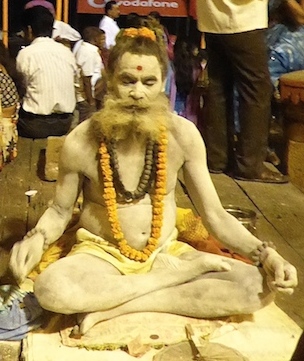
A yogi meditating by the ghats of Varanasi
Given the intense spirituality that the atmosphere around the ghats evoke, yoga and meditation are popular, especially at sunrise.
We met Vishnu Shukla via Couchsurfing who is a yoga teacher. Vishnu took us for a sunrise yoga class by the ghats.
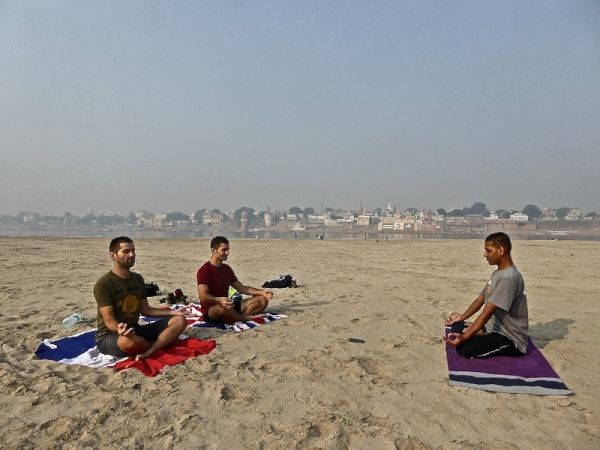
Sunrise yoga with Vishnu with a view of the ghats of Varanasi in the background

Seb photobombing Vishnu’s yoga sunrise class
However, despite Vishnu’s best efforts, we don’t think Stefan quite *got* it:

Yoga with Vishnu: Stefan trying and failing to get his leg over his head; Vishnu showing how it’s supposed to be done
Ghats of Varanasi: pollution
Unfortunately the Ganges is also one of the world’s most polluted rivers. It flows through some of the most crowded cities of India, which release their untreated sewage into it.
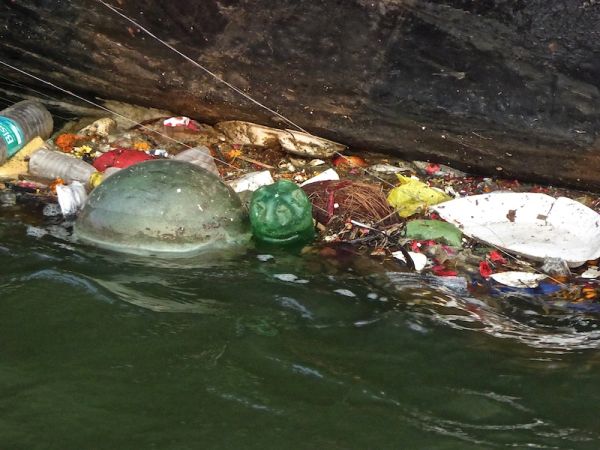
An unfortunate and common sight at the river Ganges
On one of our many evening strolls by the ghats, we stumbled on these two boys defecating into the holy river:
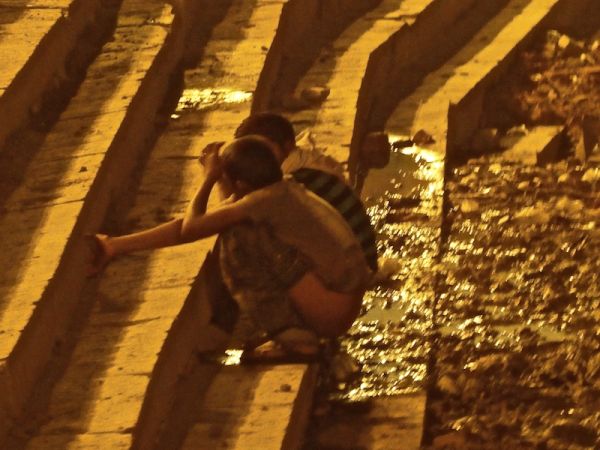
We saw these two boys taking their evening pooh out in the open and into the Ganges river!
Unfortunately, for this reason amongst many others, we did not join the crowds of Hindu pilgrims to bathe in the river.
All of these activities, practises and rituals made Varanasi our favourite destination in India, one which we will never forget.
FOR MORE FROM OUR TRAVELS IN INDIA, CHECK OUT OUR VIDEO:
The post The ghats of Varanasi appeared first on Nomadic Boys.